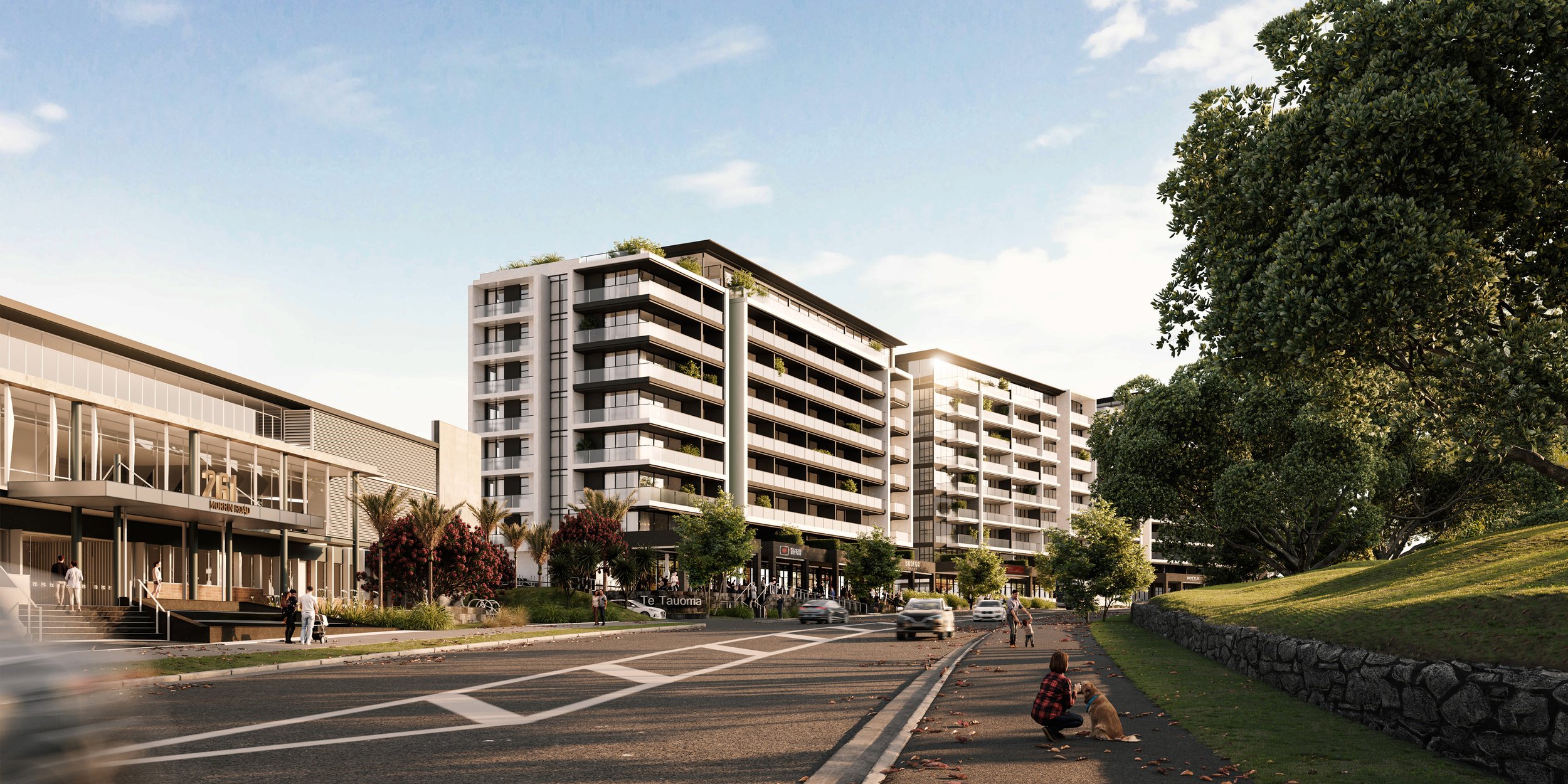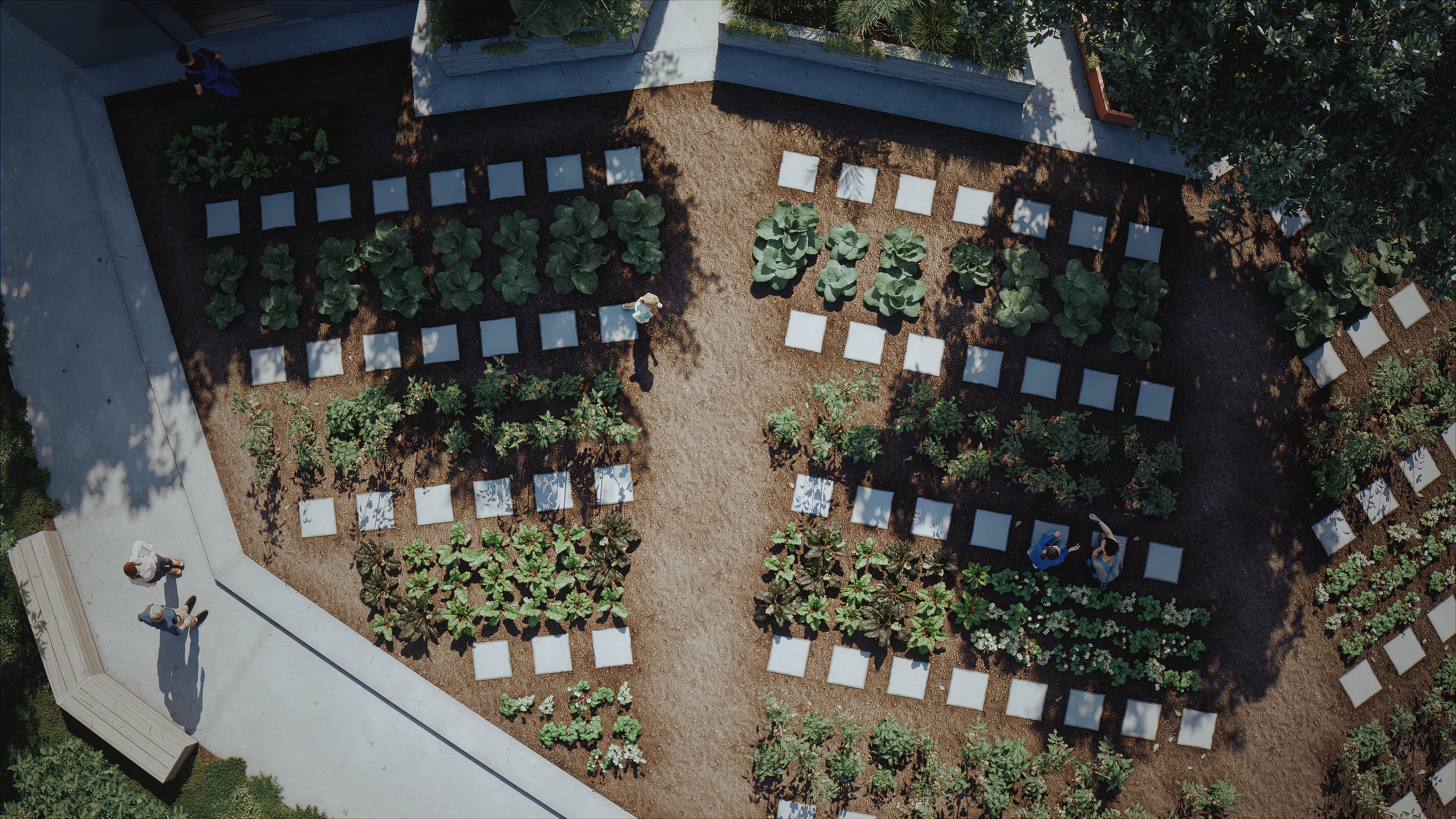
The opportunity to re-imagine and manifest a new urban story for Tāmaki Makaurau.
A place-sourced, culture-led, people-centered development.
-
By respecting history and culture and weaving them in alongside modern ways of living, mana whenua and Shundi are working together to honour excellence in design and cultural expression – and ensure balance and harmony are at the heart of our planning.
5 principles drive all our actions:
1. Rangatiratanga: Leadership and action
2. Kaitakitanga: Natural envrionment
3. Whakapapa: Culture and identity
4. Manaakitanga: Respect and care
5. Ohanga: Economic development and prosperity
-
Te Tauoma will respond to the urban nature of the location by building up, not out, to create more space.
As a contributor to Tāmaki, Te Tauoma looks to bring 5,000 people into the area to directly support and drive spending into Glen Innes.
Te Tauoma looks to introduce the concept of true apartment living:
1. Community - a desirable and convenient community celebrated in our hub: café, offices, medical centre and more
2. Climate – supports more sustainable ways of living
3. Convenient - easily stopping into the supermarket on your way home means less need for storage
4. Collaboration – embracing the principles of balance and harmony, truthfully weaving together cultures and thinking
5. Connected – easy to get to and from home
6. Charged up - using technology to make life easier, a virtual community where apps and EVs are enabled and ready for use.
-
Built for people over cars, Te Tauoma embraces the Climate Change Commission’s guidance to prioritise open space over roads and parking.
Te Tauoma will provide:
1. 35% of the land as open space
2. layers of designated open space: public, communal and private
3. Thoughtfully landscaped community gardens, playgrounds, BBQ and exercise equipment
4. Spacious apartments that have access to sun and views
A desirable hub, designed to complement the offerings of nearby town centres, buzzing with convenient community amenities for residents
Communal spaces and features also give residents the opportunity to invite friends and visitors over who cannot be accommodated in the private space of an apartment.
-
We’re constantly thinking about - and implementing - future-focused concepts, particularly to do with technology, water and energy.
Examples include:
1. Electric vehicles, bicycles and scooters available for rent: one floor of our car parking building dedicated to rentable EVs
2. Introducing virtual community facilities –e.g. technology-enabled wayfinding supported by modern technology infrastructure
3. Refrigerated delivery spaces for supermarket and other deliveries.
Restoring settlement ponds: An important early piece of work to improve water quality on site.
We will:
1. Actively contribute to restoring and enhancing Te Omaru Stream and Te Wai o Taiki.
2. Harvest rainwater, reticulating and using it through buildings to meet daily needs, and reusing that water in the immediate landscape in an ecologically responsible way (i.e. greywater)
3. Capture stormwater in planting, rain gardens and swales, and in the restored settlement pond
Sustainability
The New Zealand Green Build Council’s Homestar is a holistic rating tool for assessing the health, efficiency, and sustainability of homes across Aotearoa.
Te Tauoma is targeting a Homestar 6 rating for more than half of the apartments in Stage 1A – moving beyond the Building Code to provide apartments which are better for people and the planet. This approach aligns with Shundi and their mana whenua partner’s core value; Kaitiakitanga – to see the mauri (life essence) of Te Tauoma is sustained and regenerated for future generations.
A dense use of land through high-rise living, enabling more shared outdoor open spaces than a traditional apartment facility.
More efficient systems to heat, cool, light and ventilate the home resulting in a more comfortable and healthy indoor environment and potentially less reduced purchased energy.
Water-efficient fittings and individual water metering to reduce potable water consumption.
Facilities to separate waste and recycling to reduce waste to landfill.
Sustainable materials which have a lower environmental impact over their lifetime.
Extensive stormwater management system which reduces run-off, flooding and pollution.
Ecological enhancement through native species planting appropriate to the site.
Access to neighboring amenities including shopping, sporting, work and school facilities – reducing the need to travel.
Convenient access to sustainable transport in the form of trains, buses and cycling routes.
A shared EV car fleet and EV charging points at selected carparks.




